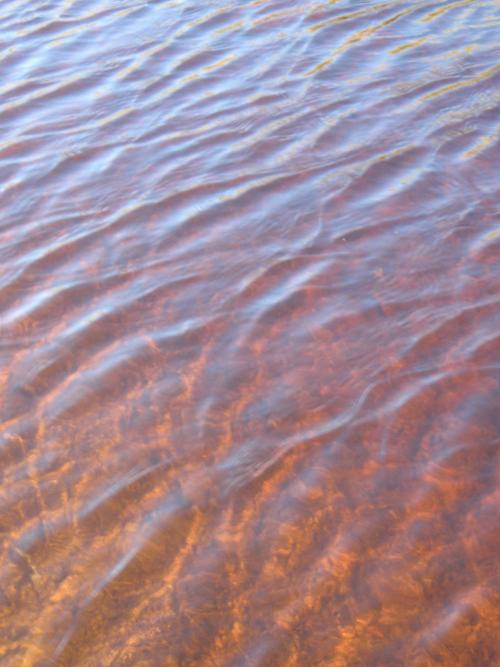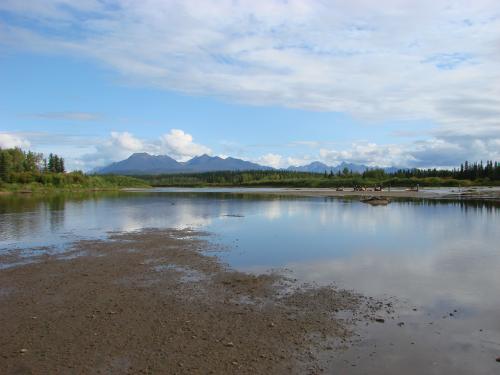The Kobuk River is influenced by flow contributions from numerous tributaries, lakes and local groundwater and while some of these flows contain high concentrations of nutrients, tannins, and acidity, relatively clean tributaries represent the largest flows and dominate the water quality. At present, these dominant tributaries effectively dilute incoming nutrients, tannins, and other important constituents that contribute to declining water quality. This effect is quite striking as one notices that although transparency in the water column does decrease slightly and concentrations of nutrients and tannins do change (again slightly) along the length of the river, the water quality in the Kobuk remains basically clear and uninfluenced by the small local flows from acidic and tannic groundwater seepage, tundra ponds, and oxbow lakes.

The striking thing about this is that, while concentrated tannic and acidic material does enter the river at numerous locations, longitudinal changes in the river water quality occur slowly and incrementally. While the large tributaries entering the Kobuk are currently clear and clean, climate warming will drive permafrost melting and the consequent release of sediment, nutrients, tannins and organic acids into these streams and therefore into the Kobuk. Likewise, small local flows to the Kobuk associated with groundwater seepage and small ponds adjacent to the river are likely to increase in number and magnitude as permafrost melts. The net effect of all of this in the long term will likely be acidification, tannification, and nutrient enrichment in the Kobuk.

While the above effects are likely to occur and intensify with warming, two important factors will govern the intensity of the effects. The first is the enormous scale of the Kobuk River Watershed. The enormity of the system is such that even extremely small changes in temperature and permafrost melting rates are likely to drive huge releases of sediments and nutrients when considering the entire watershed area. The size of the system also means that there is a tremendous amount of precipitation and therefore dilution power which will, to some extent, counteract the release of sediment and nutrients from permafrost. Secondly, the relatively slow nature of climate warming is likely to drive similarly slow, incremental changes in water quality within the Kobuk system and other similar systems. The slow, incremental changes in water quality that we witnessed as we moved downstream from Walker Lake to the village of Kobuk are likely to be mirrored in slowness of effects of climate warming on Kobuk River water quality.

As we explore the potential impact of climate warming on arctic systems, it is worth noting that these impacts will likely not be huge and obvious, at least in the short time scales that individual researchers perceive. Despite the slow and incremental nature of the problem, long term impacts of warming on Kobuk River water quality will be huge. The slow release of the enormous volume of organic material trapped in permafrost guarantees that impacts will be extreme even though they may be barely perceptible in the near term. It is the dissonance between the time scale of the problem and the time scales on which people operate that makes the problem of climate warming so difficult to grasp and, at the same time, so important to manage now.
